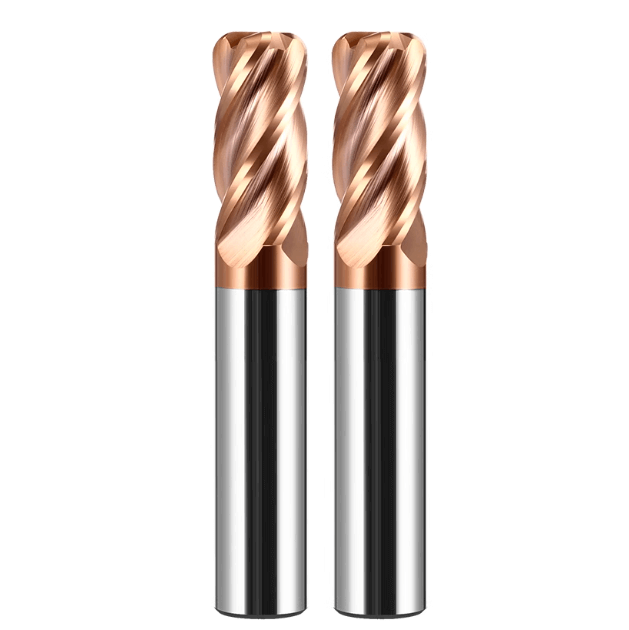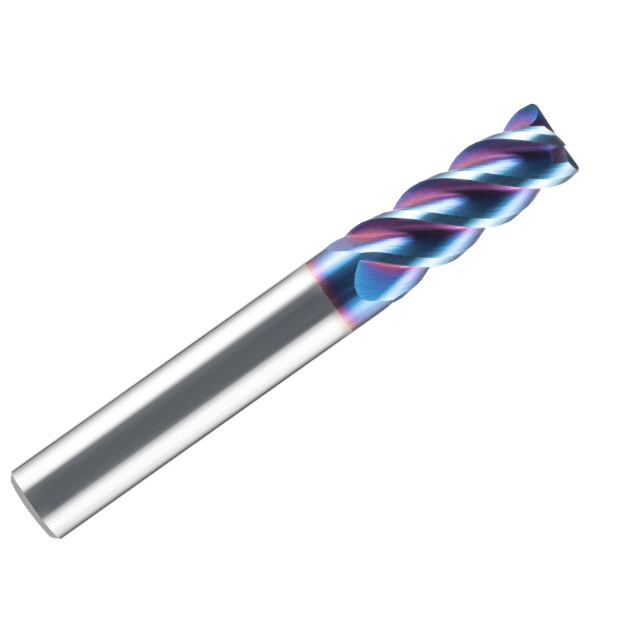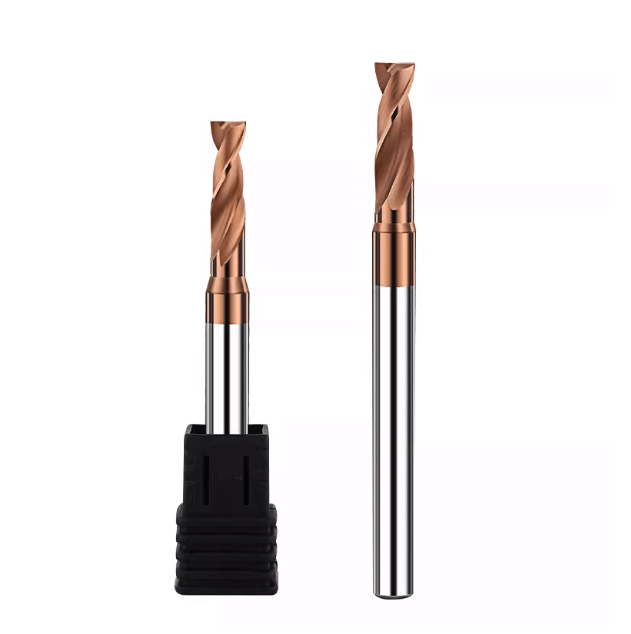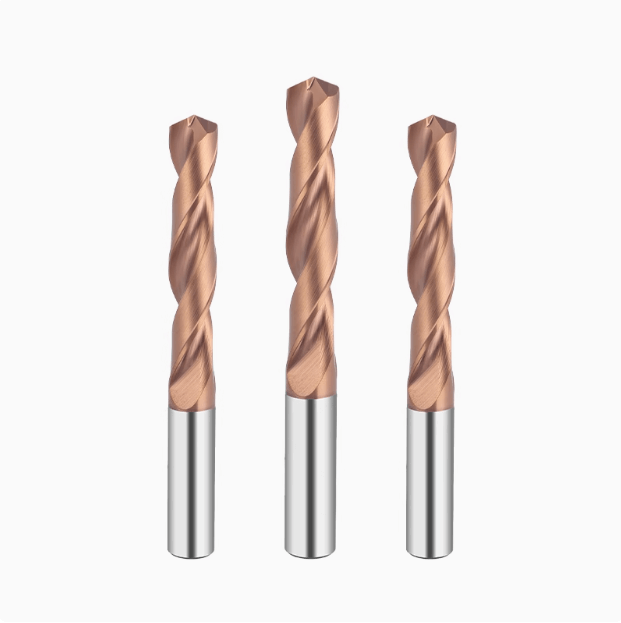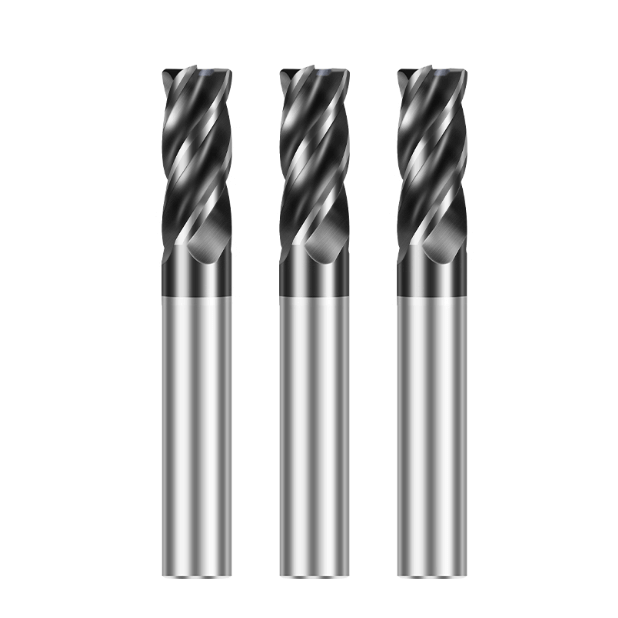Roughing end mills play a central role in efficient CNC machining, and corner radius design is a key factor in optimizing tool performance. Corner radius roughing end mills reduce cutting stress concentration and enhance tool strength, maintaining cutting stability during large stock removal and hard material CNC machining. For mold and die making roughing end mills, a suitable corner radius not only extends tool life but also improves surface quality and machining efficiency.
Additionally, the material properties of tungsten carbide roughing end mills, combined with their corner radius design, enhance wear resistance and toughness during high-load cutting. This approach is effective across various materials, including steel, aluminum alloys, and stainless steel, and provides reliable guidance for B2B companies in tool selection and production management. Choosing an experienced roughing end mills manufacturer ensures tool accuracy, coating quality, and consistent delivery cycles, forming a solid foundation for large-scale production and machining complex workpieces.
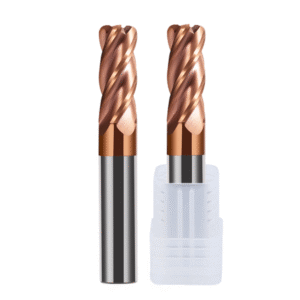
Impact of Corner Radius on Cutting Performance
Corner radius design significantly affects roughing end mill performance in three areas: cutting stability, tool life, and material removal efficiency. Adding a proper corner radius to the cutting edge effectively reduces stress concentration, minimizing vibration and the risk of tool chipping. This is especially important when machining hard-to-cut materials, such as high-hardness steel, stainless steel, or titanium alloys, ensuring consistent CNC roughing stability and precision.
The corner radius also improves chip flow, facilitating smooth chip evacuation, reducing tool load, and enhancing cutting efficiency. Overall, it allows corner radius roughing end mills to deliver superior performance across challenging machining scenarios.
Improving Cutting Stability and Reducing Vibration
Corner-radius roughing end mills distribute concentrated stress at the tool tip, effectively reducing vibration and shock fluctuations. This design is particularly beneficial in hard material machining, where high hardness can induce tool chatter and surface waviness. Radiused corners smooth the cutting interface and mitigate impact loads, ensuring a more stable cutting process and higher-quality finished surfaces.
Improving Tool Life and Wear Resistance
Using tungsten carbide roughing end mills with radiused corners significantly extends tool life. The radiused cutting edge reduces stress concentration at the cutting tip, lowering the risk of chipping and wear. Combined with the high hardness and toughness of tungsten carbide, the tool maintains wear resistance under high-load and large stock removal conditions, improving overall productivity and reliability in continuous CNC machining operations.
Enhancing Material Removal Efficiency
Radiused corners optimize both tool strength and chip evacuation. During high-volume roughing, smooth chip flow reduces cutting resistance and heat buildup, effectively increasing the metal removal rate (MRR). Corner radius roughing end mills maintain stable cutting forces in complex cavity or mold machining, enabling CNC machining centers to achieve high-efficiency material removal at greater feed rates and cutting depths.
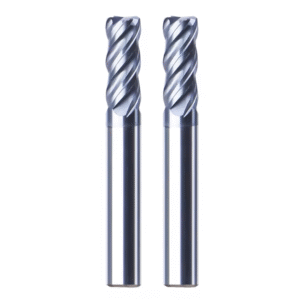
Applications of Corner Roughing End Mills in Different Machining Scenarios
Corner radius roughing end mills, with their unique cutting edge and material advantages, demonstrate exceptional stability and efficiency across a range of machining scenarios. Whether in mold cavity machining, hard material CNC machining, or high-speed aluminum alloy removal, the corner radius optimizes cutting force distribution, reduces tool wear, and improves both efficiency and surface quality. Tungsten carbide roughing end mills further enhance wear resistance and toughness in large stock removal and continuous machining, making CNC roughing operations more reliable.
Advantages in Mold and Stamp Cavity Machining
In mold and die making roughing end mills, complex part shapes and numerous curved surfaces can lead to unstable cutting and tool overload. Corner-radius roughing end mills distribute stress at the cutting tip, maintaining cutting stability in deep cavities and curved surfaces, while reducing vibration and the risk of tool chipping. Radiused corners also facilitate smooth chip evacuation, lower heat buildup, and maintain surface accuracy and machining efficiency. For B2B manufacturers, these tools enhance forming accuracy, extend tool life, and reduce overall production costs in mold fabrication.
High-Hardness Steel and Stainless Steel Machining
High-hardness steel and stainless steel are challenging materials, generating high cutting forces and causing tool wear or chipping. Corner-radius roughing end mills reduce stress concentration at the tool tip and optimize chip evacuation, mitigating friction and heat buildup. When combined with tungsten carbide roughing end mills, the tool’s hardness and toughness ensure superior wear resistance and chipping prevention under high-load conditions, supporting consistent machining quality and dimensional accuracy.
High-Speed Removal of Aluminum Alloys and Non-Ferrous Metals
High-speed roughing of aluminum alloys and other non-ferrous metals can induce vibration and surface galling due to fast cutting speeds and feed rates. Radius roughing end mills optimize cutting edge contact area and chip evacuation paths, improving cutting stability, reducing vibration, and increasing MRR. This design ensures smooth surface finishes at high speeds and allows CNC roughing centers to maintain continuous, high-efficiency operation, supporting both high-volume production and high-precision part machining.
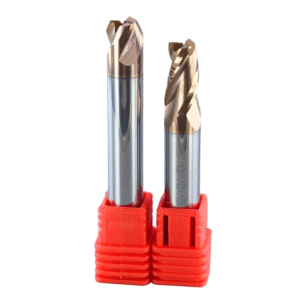
Key Factors in Selecting the Right Corner Roughing Cutters
Selecting the right corner roughing cutter directly impacts CNC machining efficiency, tool life, and part surface quality. Tool geometry, material and coating type, and sourcing from a reliable roughing end mills manufacturer significantly influence cutting stability, chip evacuation, MRR, and machining accuracy. Evaluating these factors systematically for specific materials and machining conditions is crucial for achieving efficient roughing performance.
Tool Geometry and Corner Radius Selection
Geometric parameters, including corner radius, helix angle, flute width, and nose angle, dictate cutting force distribution and stability. For high-hardness steel and stainless steel, appropriate corner radii reduce stress at the cutting tip during deep cuts and high feed rates, minimizing chipping risk. For high-speed aluminum alloy removal, a smaller radius reduces cutting resistance, increases MRR, and maintains smooth surface finish. Matching geometry to machining conditions maximizes tool performance and reduces production costs.
Matching Coatings and Tool Materials
While tungsten carbide roughing end mills excel in toughness and wear resistance, coating selection also affects tool life and surface quality. TiAlN and AlCrN coatings enhance heat and wear resistance in hard materials, whereas DLC or TiB2 coatings reduce chip adhesion and surface roughening in aluminum alloy machining. Strategic material and coating selection ensures stable, high-efficiency cutting under diverse machining conditions.
Tool Guarantee from a Reliable Manufacturer
Selecting a trusted roughing end mills manufacturer ensures tool consistency, precision, and stability. High-quality manufacturers provide accurate dimensions, consistent coatings, and reliable after-sales support, critical for mass production or complex cavity machining. They can also offer custom tooling solutions for mold and die machining, hard material removal, and high-speed light metal cutting.

Machining Strategies and Tool Management
Performance of corner radius roughing end mills depends not only on geometry and material but also on cutting strategies and tool management. Proper cutting parameters, tool life monitoring, and integration with CNC machining centers maximize corner radius advantages, enhancing stability, efficiency, and surface quality. For B2B enterprises, sound tool management reduces costs, minimizes downtime, and ensures consistency in high-volume and complex cavity operations.
Optimizing Cutting Parameters
Adjust feed rate, cutting speed, and depth of cut according to material and machining conditions. For high-hardness steel, reduce depth of cut and control feed rate to lower tool load and chipping risk. For high-speed aluminum alloy removal, increase feed and speed to boost MRR while maintaining surface finish. Optimized parameters support high efficiency, stability, and reduced tool wear.
Tool Life Management and Replacement Strategy
Preventive replacement strategies based on tool wear monitoring and periodic inspections avoid downtime and scrap due to tool failure. Combined with tungsten carbide roughing end mills, proper tool management extends life, maintains quality, and ensures dimensional accuracy in high-load, large-stock removal.
Coordination with CNC Machining Centers
Effectiveness depends on tool magazine management, path planning, and optimized cutting strategies. Proper tool arrangement reduces changeover time and errors. Optimized paths leverage continuous cutting advantages of corner radius tools, reduce vibration and heat, and improve MRR. Integrated management enables B2B manufacturers to achieve high-precision, high-efficiency production.

Application and Selection Strategies of Corner Radius Roughing End Mills in Efficient CNC Machining
Corner radius roughing end mills play an irreplaceable role in CNC roughing operations. Their optimized cutting edge design and tungsten carbide material combination significantly enhance cutting stability, extend tool life, and maintain high efficiency during large stock removal, hard material machining, and high-speed cutting of light metals. The analysis of corner radius impact on cutting performance, its applications across different machining scenarios, tool geometry and material selection, and machining strategies demonstrates that combining a well-chosen corner radius, carbide material, and proper coating is essential for achieving stable and efficient machining.
In various applications—including mold and die making roughing end mills, machining high-hard steel and stainless steel, and high-speed aluminum alloy removal—corner radius roughing end mills improve chip evacuation, reduce cutting vibration, enhance tool wear resistance, maintain surface quality, and increase material removal rates (MRR). Selecting a reliable roughing end mills manufacturer with extensive experience ensures tool consistency, precise dimensions, and a stable supply, providing a solid foundation for large-scale production and complex workpiece machining.
Overall, by integrating tool geometry optimization, coating and material matching, and effective cutting parameter and tool management strategies for different materials and working conditions, corner radius roughing end mills achieve an optimal balance of tool life, cutting efficiency, and process stability. For B2B companies, these tools provide practical guidance for selecting and applying roughing end mills in mold production, hard material removal, and high-speed light metal machining, ultimately improving productivity and reducing operational costs.



